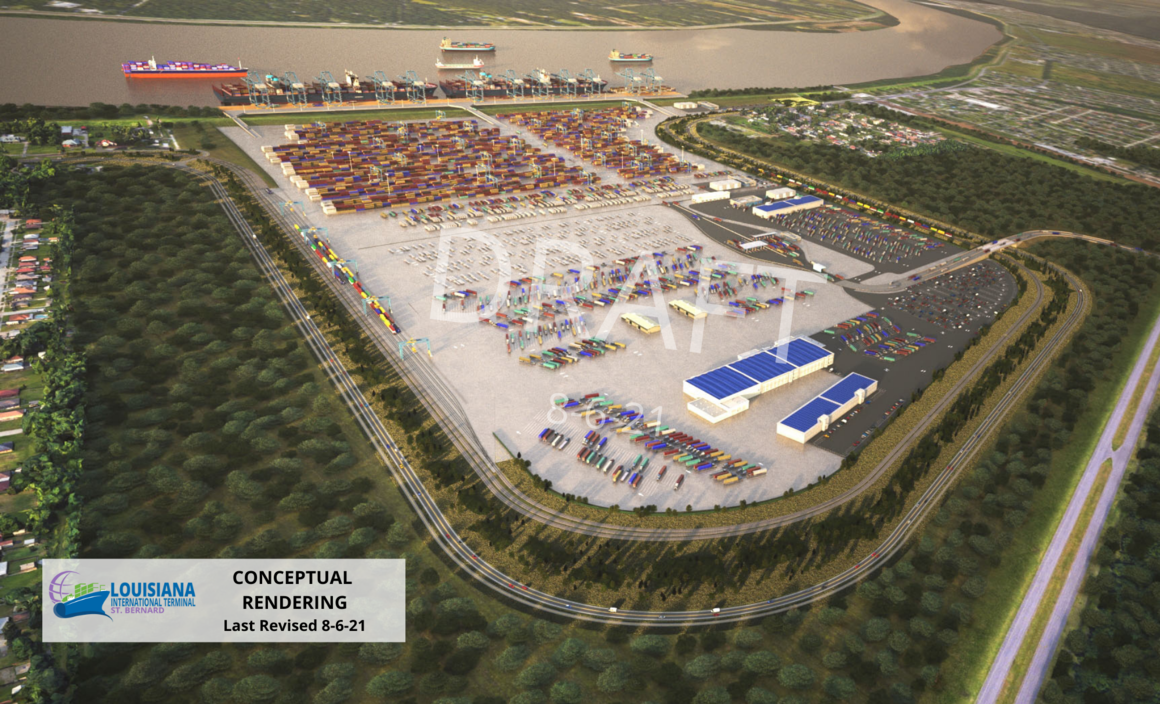
Global engineering and consulting firm HDR Engineering Inc. will manage the multiyear due diligence and permitting process for the new Louisiana International Terminal container facility in St. Bernard Parish.
The Port of New Orleans Board of Commissioners unanimously approved the contract for project management and program control services at its August meeting.
Land for the container terminal project was acquired in December 2020 and the permitting process began in June 2021. A month later, Port NOLA awarded a contract to AECOM for preliminary design and permitting support as well as ongoing engagement with industry and community stakeholders. Next steps will include consideration and evaluation of a potential terminal operator and financial partners.
“We are working to deliver a state of the art container terminal that meets the evolving needs of the shipping industry and serves as an economic catalyst for the state and region,” Brandy D. Christian, president and CEO of the Port of New Orleans and President of the New Orleans Public Belt Railroad, said in a statement, noting HDR Engineering has worked on similar large container port projects—most recently the Hugh Leatherman container terminal in Charleston, South Carolina.
HDR Engineering Inc., which has offices in Baton Rouge, Metairie, and Lafayette, will serve as the technical lead for services that include terminal operation and related transportation development, risk management, procurement support, budget and schedule management, permitting and stakeholder coordination, and environmental compliance.
Sub-consultants for the contract include Evans-Graves Engineers Inc, based in Baton Rouge and New Orleans as well as The Advocacy Partners based in New Orleans. The up to $4 million program management contract has a term of up to three years.
The project will occupy approximately 350-acres with a 3,500-linear-foot wharf within more than 1,000 acres of developable green-field property. The site, located within the federal government’s $14 billion flood protection system, features naturally deep-draft riverfront acreage, a 50-foot Mississippi River Channel, documented ability to navigate ships with a capacity up to 23,000 TEUs, ability to grow Port NOLA’s container-on-barge service, access to six Class I railroads through New Orleans Public Belt Railroad and access to the interstate highway system.
Transportation infrastructure projects that accommodate industry and St. Bernard Parish needs beyond the terminal footprint would be coordinated for maximum positive impact, including the vision of a dedicated truck route.
Acreage beyond the terminal site will enhance the project’s economic impact to St. Bernard Parish with space to accommodate distribution centers, value-added and logistics-related businesses, and buffer operations from the community and provide for public benefit spaces.


